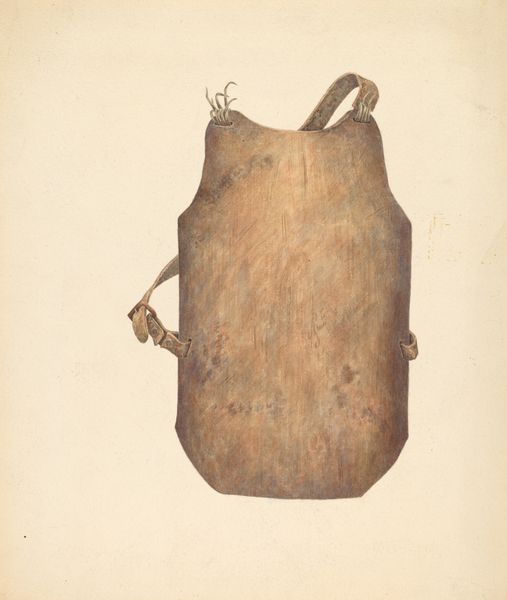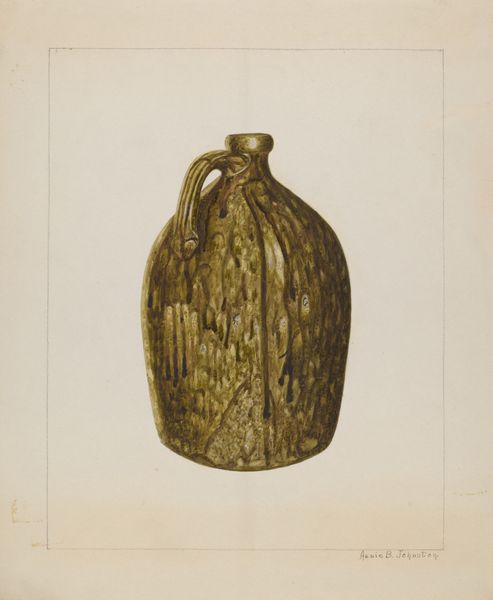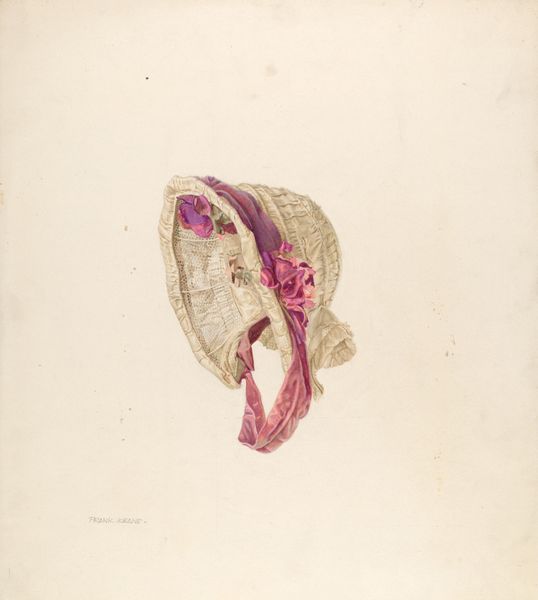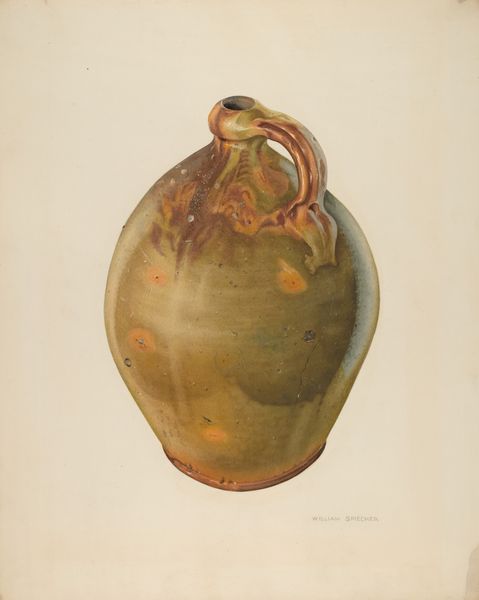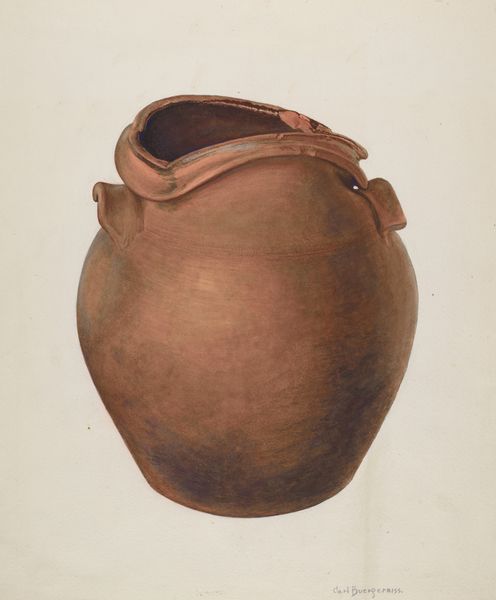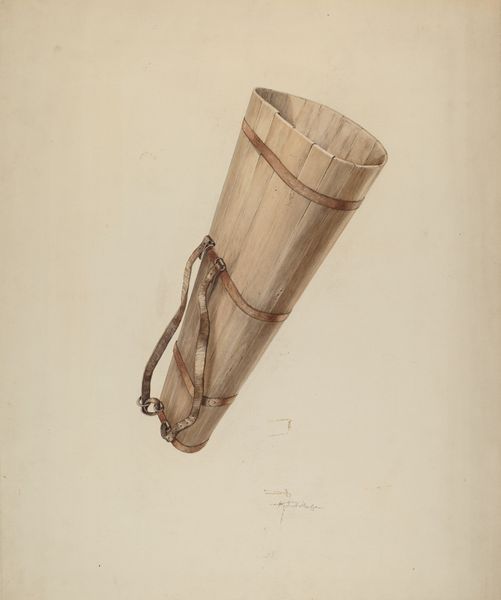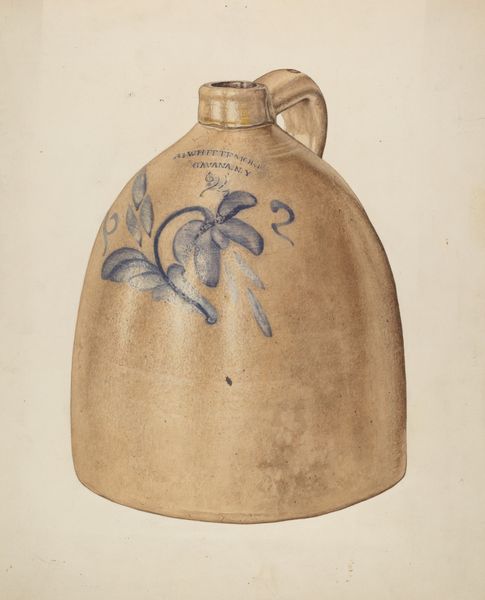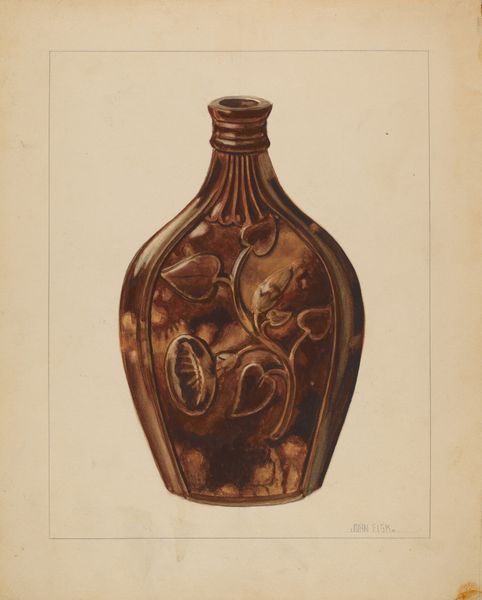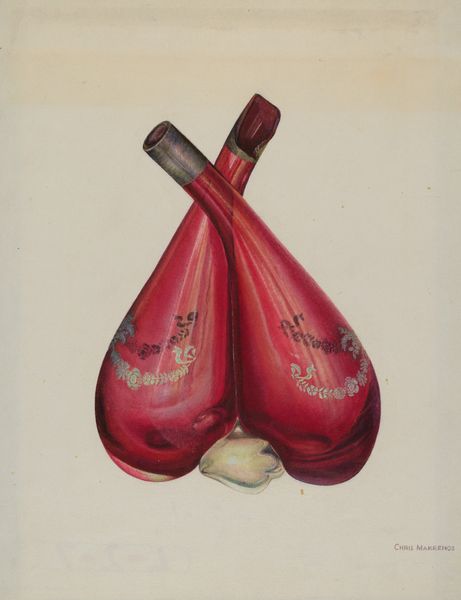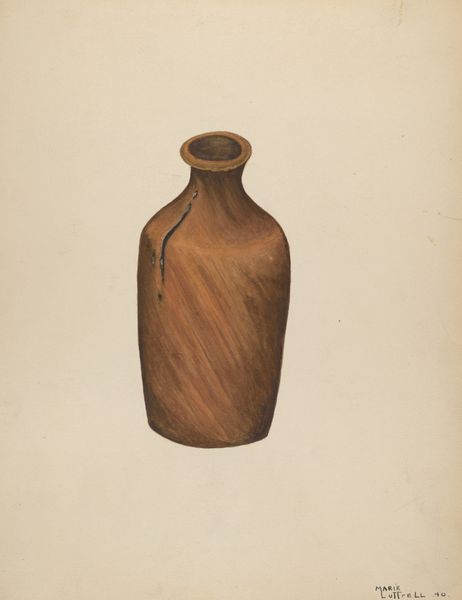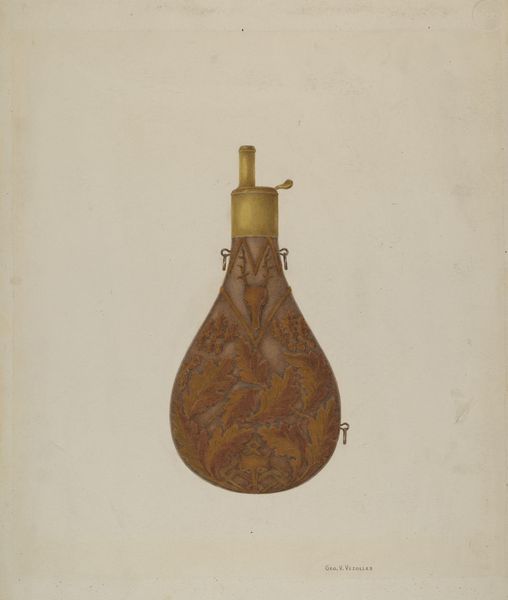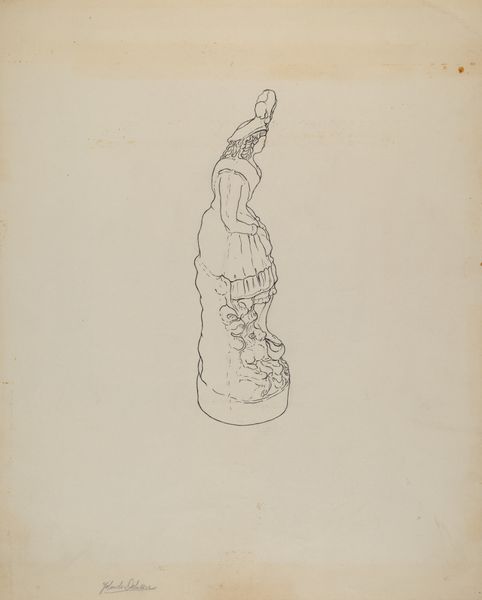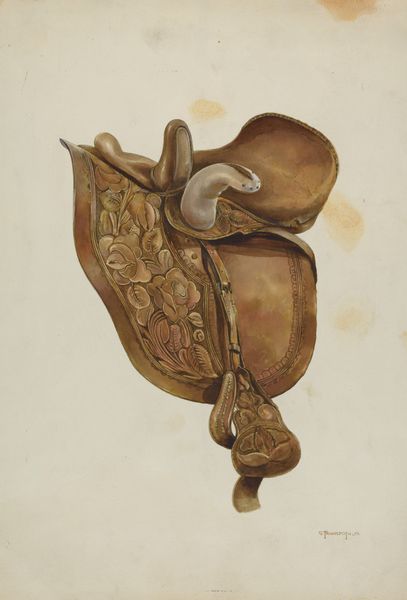
drawing, watercolor
#
pencil drawn
#
drawing
#
charcoal drawing
#
watercolor
#
pencil drawing
#
watercolor
Dimensions: overall: 27.7 x 32.5 cm (10 7/8 x 12 13/16 in.)
Copyright: National Gallery of Art: CC0 1.0
Editor: Here we have Lyman Young's "Woman's Side Saddle" from around 1936, rendered in watercolor and pencil. I’m struck by how meticulously detailed the drawing is. How do you interpret this object, beyond its obvious function? Curator: The side saddle. A seemingly simple object, yet laden with cultural baggage. The very form speaks of constraint, doesn't it? It represents a specific, and rather limited, role for women. What do you see in the rendering of the leather itself? Editor: It looks worn, used. But the ornamentation, the stitching… It feels cared for. Curator: Exactly! It’s a symbol of both practicality and a kind of constrained elegance. Notice the light. How does the artist use light and shadow to define the object? Does that say something about tradition and nostalgia? Editor: The light catches the top, the horn. The shadows suggest weight and substance, but also…the saddle appears disconnected, floating almost, against the plain background. Maybe longing for a rider, a purpose? Curator: A disembodied symbol then, you suggest? Perhaps the absent rider speaks volumes. The side saddle reminds us of a bygone era, and serves as a material expression of societal expectations and limitations placed upon women. A beautifully crafted tool of social control. Editor: So it’s more than just equestrian equipment, it’s a reflection of a whole social structure. I'll never look at a saddle the same way again. Curator: Indeed! The seemingly mundane often carries the weight of history. Art helps us decode those cultural messages.
Comments
No comments
Be the first to comment and join the conversation on the ultimate creative platform.
